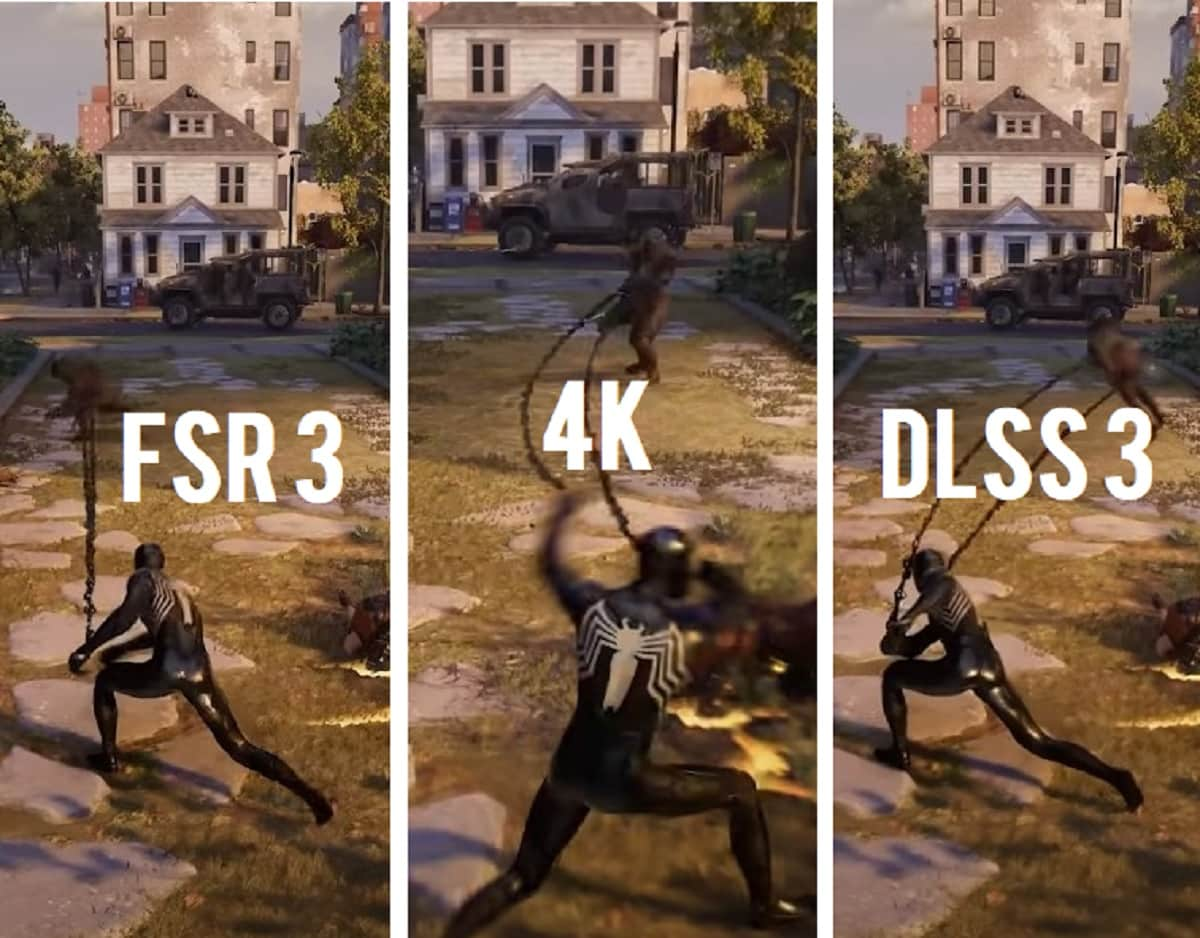The gaming world is abuzz with excitement as both AMD and Nvidia recently unveiled significant announcements regarding their upscaling technologies. In this article, we’ll dive deep into these developments, exploring AMD’s FSR3 and Nvidia’s DLSS 3.5. We’ll dissect the features, examine their implications, and provide insights into what gamers can expect from these innovations.
Understanding AMD’s FSR3: A Leap Towards Mass Adoption
AMD’s announcement regarding FidelityFX Super Resolution 3 (FSR3) has sent shockwaves through the gaming community. The key highlight is AMD’s ambitious plan to bring frame generation to all GPUs, regardless of whether they are AMD, Nvidia, or even Intel cards. While this sounds revolutionary, there is some ambiguity surrounding the compatibility and recommendations.
Temporal Upscaling: The Backbone of FSR3
At the heart of FSR3 is temporal upscaling, a technology that, when finely tuned, can significantly boost FPS while minimizing a discernible drop in image quality. Temporal upscaling leverages multiple frames to generate a higher-resolution image, ensuring smoother gameplay. It’s important to note that FSR3’s approach to temporal upscaling is distinct from Nvidia’s DLSS, which relies on machine learning.
To illustrate the potential of temporal upscaling, let’s consider Epic Games’ Fortnite, which implements a similar technology called TSR (Temporal Super Resolution) in Unreal Engine 5. With TSR, the base render resolution of 66 is upscaled to 4K, yielding over a 40% increase in frames without a significant loss in visual quality. Some gamers even find TSR to outperform DLSS2 in certain titles.
Real-Life Example: The Impact of TSR in Fortnite
| Game | Resolution | Upscaling Method | FPS Increase | Visual Quality |
|---|---|---|---|---|
| Fortnite | 360p to 4K | TSR (Unreal Engine 5) | >40% | Desirable |
AMD’s close collaboration with Epic Games in Unreal Engine projects raises exciting possibilities. If AMD can integrate TSR into FSR3 effectively, it could offer a compelling upscaling solution, particularly for games built on Unreal Engine 4 and 5.
Practical Implications and Compatibility
The real question gamers have is whether their GPUs will support FSR3. Unfortunately, this is where ambiguity creeps in. AMD’s announcement states that FSR3 will support all DX11 and DX12 titles, but the list of supported GPUs appears unclear.
Recommendation and Supported GPUs for FSR3:
| GPU Series | Recommended | Supported |
|---|---|---|
| AMD | RX 5700 and higher | All AMD GPUs |
| Nvidia | RTX 20 series and higher | All Nvidia GPUs |
This table attempts to clarify the situation, indicating that AMD recommends RX 5700 series and above for optimal performance. However, FSR3 should theoretically work on other AMD GPUs. As for Nvidia cards, the supported range is from the RTX 20 series and onwards, with the frame generation feature exclusive to the RTX 40 series.
Nvidia’s DLSS 3.5: Refining Ray Tracing and More
Nvidia, not to be outdone, has introduced DLSS 3.5, accompanied by its Ray Reconstruction technology. DLSS, short for Deep Learning Super Sampling, has been a game-changer for gamers, offering improved performance and image quality through AI-driven upscaling.
Ray Reconstruction: Enhancing Ray Tracing Efficiency
DLSS 3.5 comes with the promise of enhancing ray tracing further. Nvidia aims to make ray tracing more efficient by addressing issues like shimmering artifacts and providing a superior denoising filter. This translates to an even better visual experience for gamers who choose to enable ray tracing in supported titles.
Compatibility and Ambiguity
Similar to AMD’s announcement, Nvidia’s communication regarding DLSS 3.5 comes with some ambiguity. While the promotional graph suggests support for all Nvidia RTX cards, the frame generation feature appears exclusive to the RTX 40 series. This detail has raised questions and concerns among gamers.
DLSS 3.5 Compatibility:
| Nvidia RTX Series | DLSS 3.5 Support | Frame Generation Support |
|---|---|---|
| RTX 40 Series | Yes | Yes |
| RTX 30 Series | Yes | No |
| RTX 20 Series | Yes | No |
This table aims to clarify the compatibility of DLSS 3.5, with frame generation limited to the RTX 40 series. Gamers with older RTX cards may find themselves without this feature, even though DLSS 3.5 is supported.
NAA: AMD’s Answer to DLAA
Alongside FSR3, AMD is introducing its own anti-aliasing technology, NAA (Not Anti-Aliasing). This development is particularly intriguing, as it offers an alternative to DLAA (Deep Learning Anti-Aliasing), Nvidia’s anti-aliasing solution. Anti-aliasing is crucial for smoothing jagged edges and enhancing overall image quality in games.
Real-Life Example: The Power of NAA in Baldur’s Gate 3
One notable example of NAA’s prowess is seen in Baldur’s Gate 3. Players who enabled NAA reported a visually appealing experience that surpassed other anti-aliasing methods like SMAA (Subpixel Morphological Anti-Aliasing). NAA’s ability to deliver superior image quality could make it a compelling choice for gamers who prioritize visual fidelity.
However, there’s a potential challenge. Just as with FSR3 and DLSS 3.5, gamers may have to choose between AMD’s NAA and Nvidia’s DLAA. It’s unclear whether these anti-aliasing technologies can coexist in the same game, and gamers might have to make a decision based on their preferences.
Conclusion: The Upscaling Landscape Is Evolving
As we eagerly await the release of FSR3 and DLSS 3.5, one thing is certain: the upscaling landscape in gaming is evolving rapidly. Both AMD and Nvidia are pushing the boundaries of what’s possible in terms of performance and visual quality. However, the ambiguity surrounding compatibility and feature availability raises questions that need to be addressed.
Gamers will soon have more choices than ever when it comes to upscaling and anti-aliasing technologies. The key to making the most of these innovations is to stay informed, test them in your favorite games, and decide which option aligns best with your gaming preferences.
In the end, whether you’re an AMD enthusiast excited about FSR3 or a loyal Nvidia user looking forward to DLSS 3.5, these advancements promise to enhance your gaming experience. It’s a testament to the ongoing competition and innovation within the gaming industry, ultimately benefiting gamers worldwide.
















